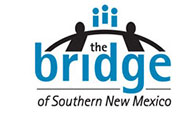The Power of People in New Mexico’s Economic Recovery
As published in the Las Cruces Bulletin, January 15, 2021
The New Mexico Chamber of Commerce launched into 2021 with a business-led, strategic plan for the economic recovery of New Mexico.
The plan, Driving New Mexico’s Future: Empower a Competitive Economic in a Post-Pandemic World, was unveiled on Jan. 12 at the University of New Mexico Economic Summit, which was attended by close to 300 statewide.
In the goals and strategies for economic recovery, developing a powerful workforce (people) to drive recovery factored very high, as workforce issues usually do. The statewide survey of 700 people identified workforce challenges as the number-one barrier to growing jobs in the state. Specifically, “More workers with in-demand skills are needed.”
The plan advanced three key goals with different strategies for accomplishing each:
- Increase the overall labor pool for employers
- Improve the number of workers with work-readiness skills and in-demand middle skills
- Extend opportunity to underserved communities and populations.
I facilitated a group conversation on this topic during a breakout session, and the conversation with people across the state mirrored those we have been having for years, including speaking to deeper issues beyond the recommendations in the report
The majority of the conversation focused on improving the number of workers with work-readiness skills and in-demand middle skills. One of the participants talked about the importance of “vocational” or career-focused education for students, which is linked directly to higher high school graduation rates.
Today, we call that Career and Technical Education (CTE). CTE is focused on hands-on learning tied to preparation for various careers, and we’ve been laser-focused on building and supporting strong, well-aligned CTE pathways into the best careers in our region.
“Every student in high school should learn a trade, whether they plan to go onto college or not,” said one of the Summit’s participants.
Another said, “We need to make New Mexico the ‘state-to-go’ for skilled trades people in key areas.”
The conversation also talked about helping our students set their horizons higher…finding out what kids love to do and helping them find careers matched to that. Low expectations for our students hinder them becoming all that they can be, and as one participant from the STEM field said, “Our students are amazing.”
The strategic plan also proposed advancing the ACT National Career Readiness Certificate in ACT’s Certified Work Ready Communities (CWRC) program statewide. From the perspective of business, there is great value in having a “ready-made list” of eligible candidates (those whose skills are clearly matched to the needs of the job) from which employers can choose.
This is an important role that the Workforce Connections system can play and do so in partnership with the career services staff at both Doña Ana Community College and New Mexico State University. Helping graduates convey their skill and knowledge capabilities in their resumes will help employers better identify the best candidates for their jobs.
Another of the report’s strategies is to incentivize STEM graduates with scholarship funds which are also tied to remaining in the state for a defined period of time in order to encourage more STEM graduates. The Arkansas Future Grant is a model for an approach like this, which provides five semesters of funding for students pursing a STEM-related associate degree. In exchange, students agree to remain in the state for three years. If they choose to leave the state, it is converted into an interest-bearing loan.
It is possible for our state to come out of COVID on a strong path to recovery instead of the extended period of recovery post-Great Recession that dragged on for a decade. The importance of people in that recovery can’t be overstated, and our collective efforts to equip those people for those opportunities is right on track in our county.
To learn more or to view the full plan, visit nmchamber.org. and click on the Issues tab.

